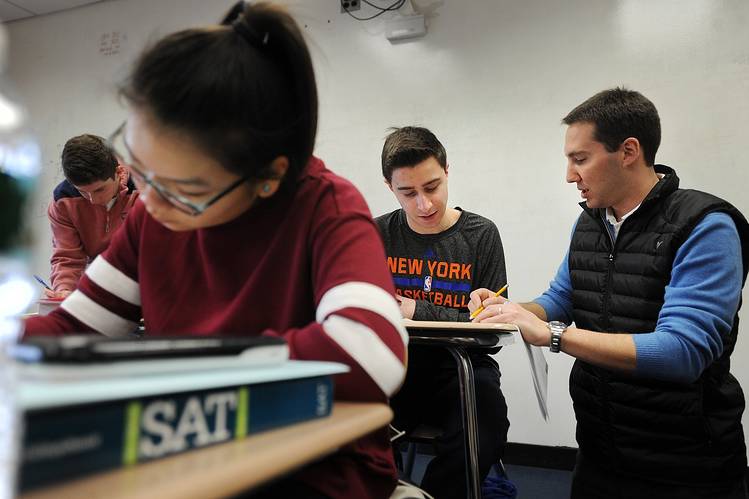At age 14, every child- or should I say every privileged child knows the meaning of the Ivy Leagues. The 8 most prestigious universities in the world are, without doubt, the sweetest candy a child could crave, except, it’s here that the question arises- to what extent are students and their parents willing to go to get into these institutions?
First, let’s look at what the Ivy Leagues are and what makes them so coveted.
The Ivy Leagues comprise 8 prestigious schools, typically famous for their selective acceptances, outstanding academics, and social elitism. While the name Ivy Leagues come from the institutions (namely Harvard University, Stanford University, University of Pennsylvania, Dartmouth University, Columbia University, Cornell University, Princeton University, and Brown University) being a part of the first formal athletic league in the US, today, the ancient eight as they were once known as have acceptance rates as low as 4%.
However, for those handfuls of chosen ones, the Ivy Leagues open a new horizon. The average salary of a ‘Upenn’ graduate at age 34, is the stupendous sum of $91,800 a year, and the average salary of a fresh Ivy League graduate, in general, is $80,000. In order to be part of the creme de la creme, students enter this rat race of building a perfect application only for more than 90% of them to get rejected.
So what’s wrong with the Ivy Leagues?
A lot of things to be honest. But first, let’s talk about the SATs.

The Scholastic Assessment Test is a nearly century-old standardized testing mechanism that all students applying to undergraduate universities in the United States must take. 95% of universities in the United States ask for SAT scores and therefore if a child is unable to take it, he is automatically ruled out from the admissions process.
But here is where the problem lies- while the SAT claims to evaluate a child’s aptitude, it does not take into consideration the socioeconomic status of the child. Prep for the SAT such as coaching classes, books, counselors, and other resources costs anywhere between a hundred to thousand dollars, making college testing a billion-dollar industry. Additionally, according to Fair Test, a standardized testing watchdog group, as family income increases, so do the children’s scores on the test. In fact, there is a 400 point difference between the poorest and richest students, thus solidifying the notion that the SAT reinforces privilege rather than merit.
The side door
Of course, in spite of all the resources available, some wealthy children are still unable to earn their way into the Ivy Leagues. Nonetheless, privilege plays a role again, helping them to get into these institutions through what is known as “the backdoor” which essentially means making over a million-dollar donation to the institutions for them to consider the child’s application again. However, with the backdoor, there is no guarantee of admission. So people opted for another scheme.

Operations Varsity Blue revolves around the side door mechanism of helping rich kids get into prestigious colleges of their choice. The side door is an unethical scheme devised by Rick Singer and privileged white parents who not only bribed universities with their donations but paid people to take the SATs for their children, posed their children as athletes for sports they had never even played and the worst of all- made their white children pose as black on their application to take advantage to the affirmative section. Thus, while education is supposed to be the one equalizer in our society, this “side door” system only proves how wealth and power create more inequalities in an already skewed system that favors the rich.
The stupendous tuition fee
Another point to note is the absurd tuition fee. The average tuition fee of the Ivy League as of 2020 was $56,425 per year and in order to complete a 4-year degree from Harvard, it costs around $200,000- excluding rent, food, etc. Without a doubt, this is far from affordable for the average middle-class family. As a result, the majority of students who attend Ivy Leagues come from wealthy families earning over $200,000 a year.
As reported in the New York Times, 69% of Yale students come from the highest-earning 20% of American families and around 19% belong to America’s top 1% wealthiest families. According to research done by Harvard’s own Raj Chetty, students from the top 1% of households are 77 times more likely to be admitted to and attend an Ivy League school than students from households who make below $30,000 a year. And while Ivy Leagues put on the facade of making generous financial aid available to children from low-income families- it’s simply not enough, causing the majority of them to give up their dream school.
The lack of intellectual curiosity
Lastly, the problem goes beyond the socio-economic gaps.
While the crux of the issue is that children from low-income backgrounds cannot afford this prestigious education, what’s equally concerning is the fact that the wealthy students who do attend these institutions are trapped in their little bubble of privilege.
Experiences are no longer experienced but rather commodified so that they can talk about it or write about it and capitalize on it- making mere experiences superficial.
While they may indeed be intelligent and talented, as suggested by former Yale and Columbia professor William Deresiewicz, they lack intellectual curiosity. Their primary goal to attend university is to make money- not gain knowledge. Experiences are no longer experienced but rather commodified so that they can talk about it or write about it and capitalize on it- making mere experiences superficial.
What’s worse is the student’s perception of diversity. Students at Ivy League believe that if one of their classmates comes from Nigeria and another from Pakistan or if one of the students rows while another plays the violin they’re amidst a diverse group. Their eyes fail to see that their horizon ends where socio-economic gaps begin. And while these institutions promote meritocracy, it’s clearly creating a hierarchy within the elitist of the elite, without even giving the lower and middle class an opportunity to rise.
Cover: Julia Schorr
Edited by: Yili Char





